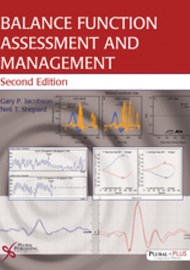This is the second edition of this reference work which was first published in 2008. Vestibular assessment and management has moved on in the intervening seven years and this new edition reflects this. This aims to be a comprehensive reference for professionals working in this field and the additional chapters add significantly to the content.
Several new authors have revised or provided new chapters adding to the contributor list which reads like a ‘who’s who’ of vestibular assessment and management. There are welcome, entirely new chapters on the development of the vestibular system balance and vestibular compensation. A revised assessment section includes a new chapter on electrocochleography as well as an excellent introduction and summary of paediatric vestibular testing.
Chapters on computerised dynamic posturography have been supplemented with additional information on biomechanics and the physiology of balance. Gone is active rotation testing and in its place a comprehensive chapter on video head impulse testing which includes a useful trouble-shooting section. Other new content includes a chapter on the topographical localisation of vestibular impairment with some excellent clear diagrams, providing a useful link back to the first chapter on anatomy and physiology.
The chapter on psychiatric dizziness has been revised and renamed, detailing the contribution and inter-relationship of behavioural and psychological factors in dizziness. In a world where we are seeing increasing numbers of elderly people with dizziness (often associated with other co-morbidities) it was pleasing to see that the section on rehabilitation in this population extended to two chapters to include a focus on the aging vestibular system.
The previous edition was accompanied by a set of DVDs. This new edition comes with access to a companion website giving online access to videos to support the text. In the context of vestibular assessment that relies a good deal on eye movement assessment and vestibular rehabilitation that relies, to a large degree on physical therapy it is useful to retain access to examples of eye movements and test results. The new edition also retains the final chapter with illustrative case studies which serves to bring this comprehensive text to a cohesive close.
This is an expensive substantial book but it does meet its aim of being a comprehensive reference text for professionals working in the field of vestibular assessment and management. I have made frequent use of the first edition and I’m sure I will get just as much out of this updated version. If you are a ‘first time buyer’ looking for a single reference text to use in this context then this is it.





